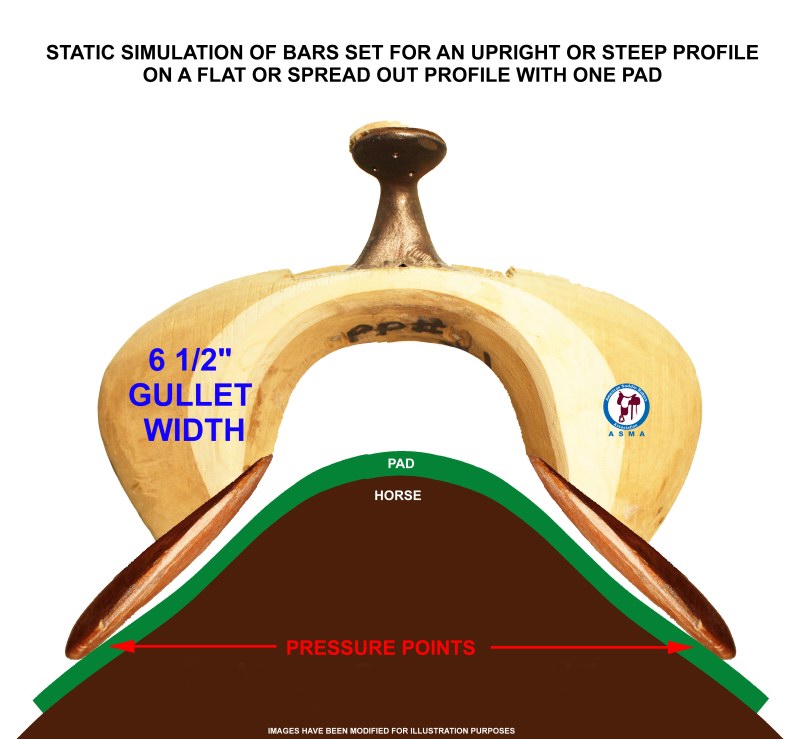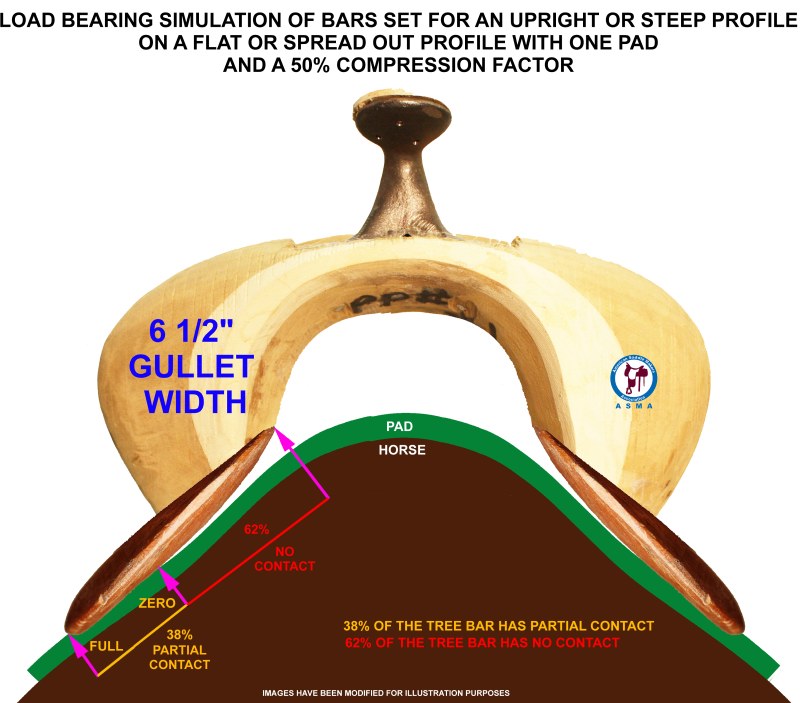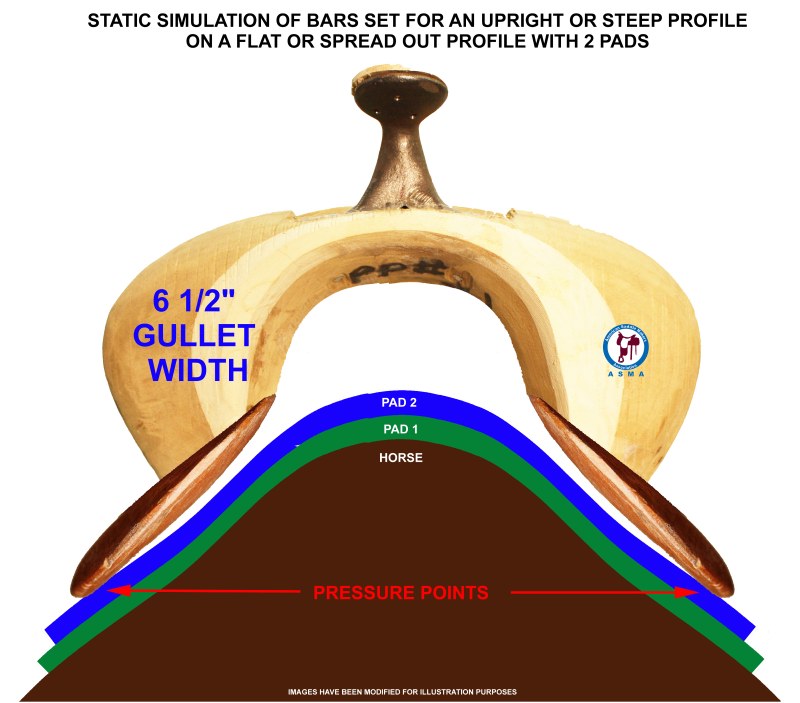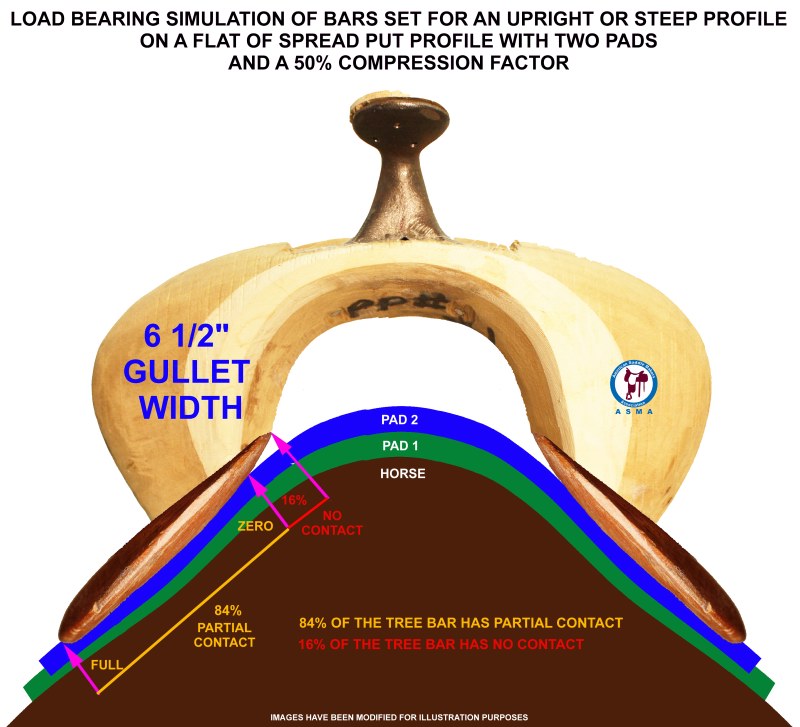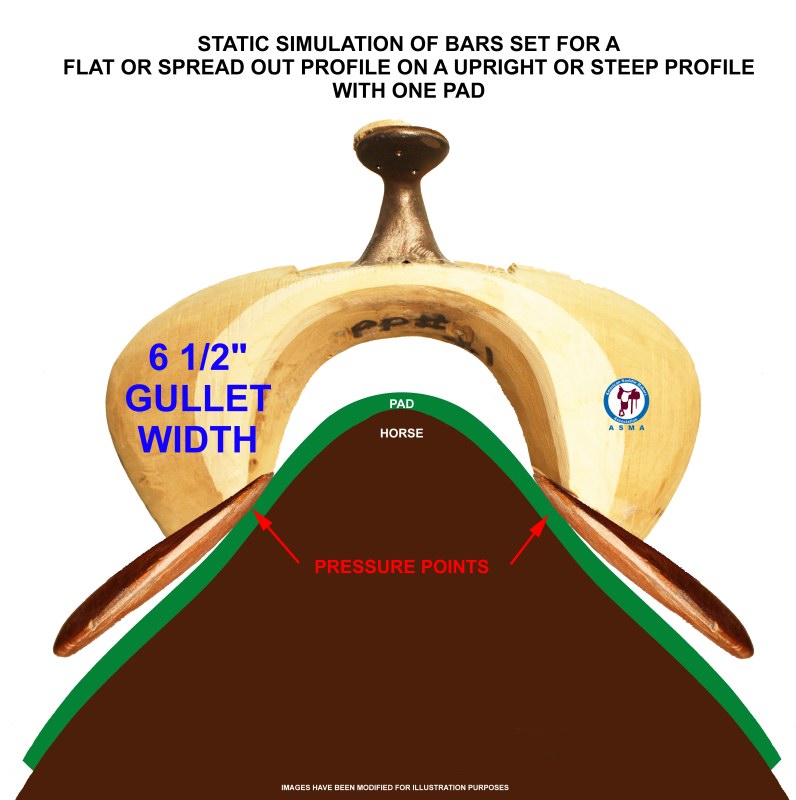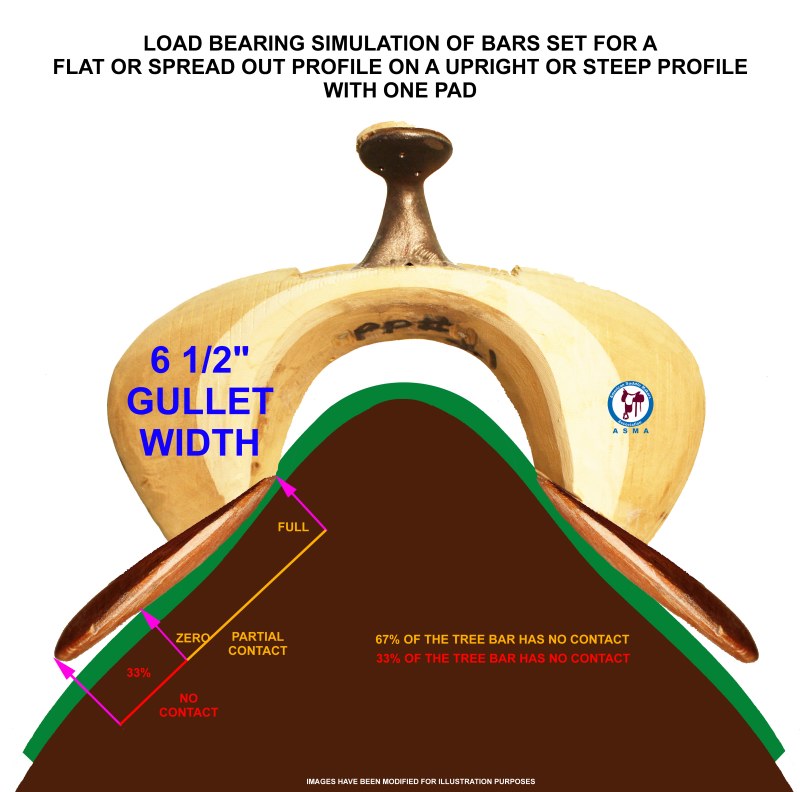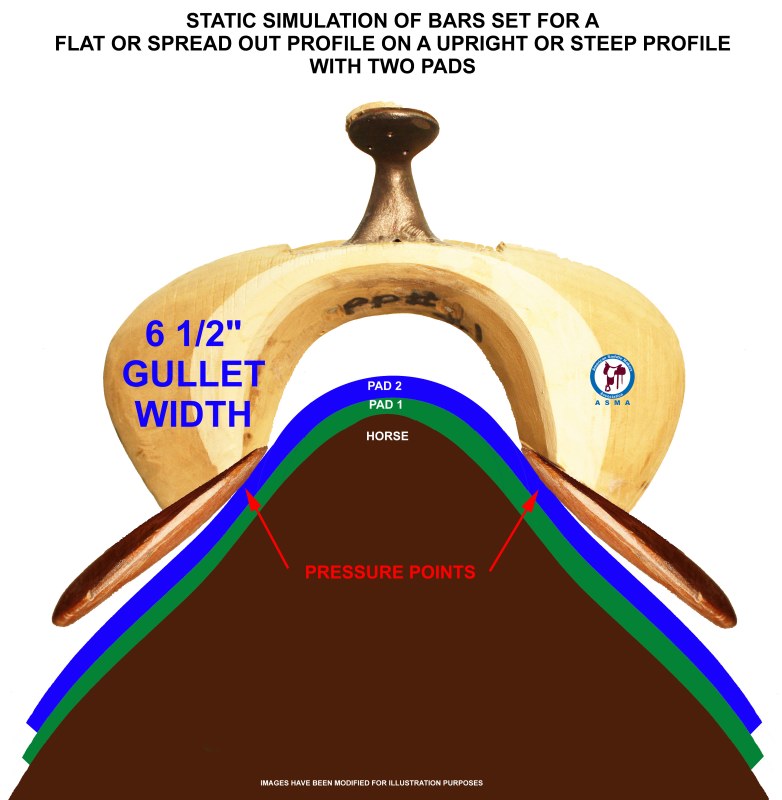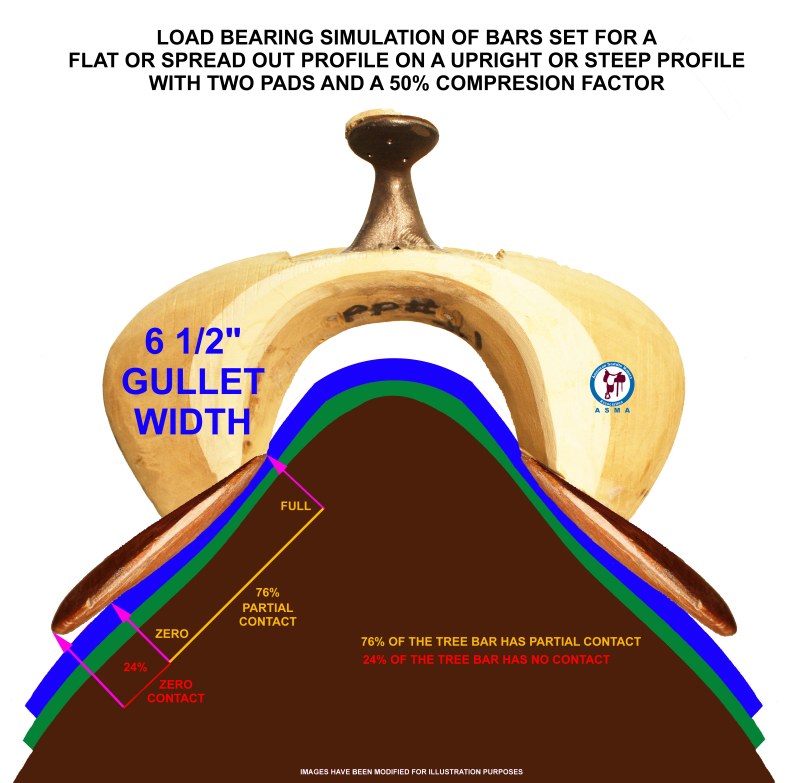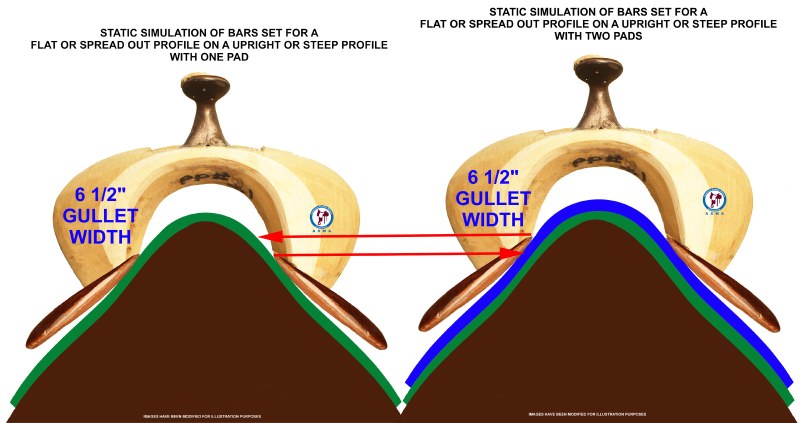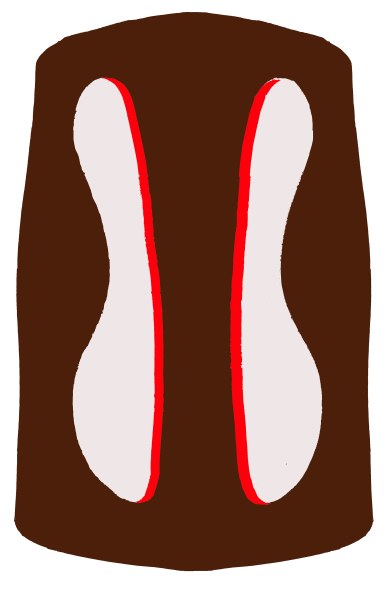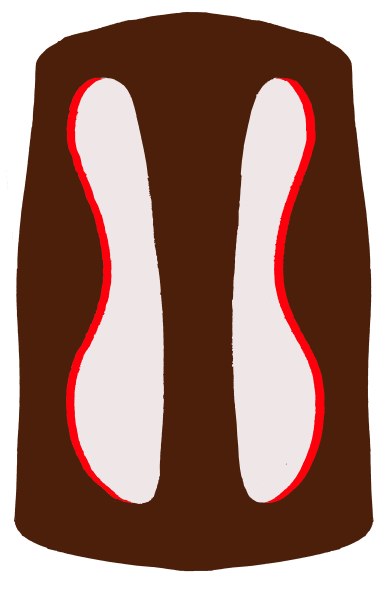PAD UP
|
Generally, when a horseman has an ill fitting saddle they will “pad-up.” When one “pads-up” they will use a thicker pad or multiple pads. This additional padding will decrease the pressure to some extent, but how much is unknown and will depend upon the compression factor of the pads used and how the material disburses the load. The following are simulations and results of various “padding-up” situations with a negative saddle fit based on an incompatible angle.
|
|
Here we have a situation where the angle of the bars is too steep for the profile of the horse’s back. This results in having pressure points at the bottom portion of the bars.
|
|
When the rider sits in the saddle, the rider’s weight creates a load factor that is transmitted to the bars of the tree and the pad is compressed and distributes the load factor. In this case 62% of the bars have no contact with the horse and 38% has partial contact with the horse. The actual surface area of the bar that disburses the load is unknown without further detailed pressure mapping, but will be probable less than calculated.
|
|
As with one pad, we have a situation where the angle of the bars is too steep for the profile of the horse’s back. This again results in having pressure points at the bottom portion of the bars.
|
|
With two pads there is improvement over one pad. In this case 16% of the bars have no contact with the horse and 84% has partial contact with the horse. As with the one pad situation, the actual surface area of the bar that disburses the load is unknown without further detailed pressure mapping, but will be probable less than the calculated 84%.
|
|
This situation is the reverse of the previous examples. Here the angle of the bars is too flat for the profile of the horse’s back. This results in having pressure points at the top portion of the bars.
|
|
As with the previous example, when the rider sits in the saddle, the rider’s weight creates a load factor that is transmitted to the bars of the tree and the pad is compressed and distributes the load factor. In this case 33% of the bars have no contact with the horse and 67% has partial contact with the horse. The actual surface area of the bar that disburses the load is unknown without further detailed pressure mapping.
|
|
Here again the angle of the bars is too flat for the profile of the horse’s back and a second pad has been added. This results in having pressure points at the top portion of the bars.
|
|
With a second pad added, there is improvement over one pad. In this case 24% of the bars have no contact with the horse and 76% has or partial contact with the horse.
|
|
Load bearing analysis of partial contact with the horse’s back
The purpose of the bars of the saddle tree is to disburse the rider’s weight evenly on the horse’s back. If a rider weighs 175 pounds and the area of the tree bars is 208 square inches, then each square inch of the bars in theory disburses .84 pounds. In this simulation, the width of the bars has 76% contact with the horse’s back or 158 square inches, which equates to 1.11 psi. A random a cross section of the bar equals 6 ½ inches. Then 76% contact equals about 5 inches of bearing surface. Each square inch will disburse 1.11 pounds for a total of 5.55 pounds if there is even pressure on the horses’ back. The problem is that the pressure is not even, in that the contact is partial going from full pressure to zero pressure. In this example, the area of full contact has about double the psi of the even pressure of .84 psi at 1.60 psi. At the opposite end instead of even pressure of .84 psi there is zero psi. Even with two pads mitigating part of the pressure one still has a pressure point at the top of the bars in this simulation.
|
 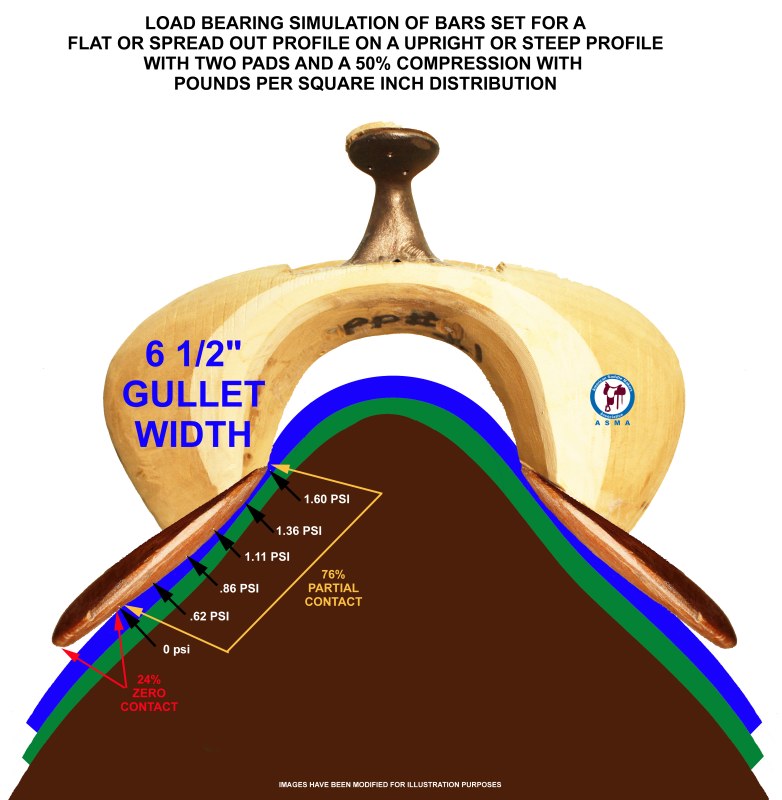 |
As stated before, saddle fit is subjective. While the extra padding does disburse some of the pressure it will not eliminate it as illustrated in the above simulations.. So for a two hour trail ride or an evening of team roping this may be within tolerances, but not be within tolerances for a good full day gathering cattle.
Also, one must consider that while a thicker pad or multiple pads can mitigate the negative saddle fit other possible problems may be created. By adding additional padding, the riders center a gravity is raised ( see the example below ), causing the rider to feel top heavy and out of balance. The additional padding can also cause the saddle to roll more than normal.
The frustrating part of saddle fit, is when one attempts to fix one problem, another problem may be created that can negate or mitigate the attempted solution to the problem at hand.
|
|
|
|
NOTE: One must remember that the tree bars have both a vertical plane ( bar angle ) and a horizontal plane ( bar rock ).
Not only does the bar angle or vertical plane need to have even pressure along the width of the bar, but the bar rock or horizontal plane needs to have even pressure along the length of the bar. In the above simulations the bar angle is incompatible with the profile, thus causing a negative fit. For demonstration purposes it is assumed that the bar rock is compatible with the profile ( because if the rock is also incompatible, the chance of achieving a satisfactory fit is extremely doubtful ). Therefore, the pressure is basically even along the length of the bar, whether that pressure is at the top of the bar or at the bottom of the bar as indicated in the below simulation.
|
|
 |
